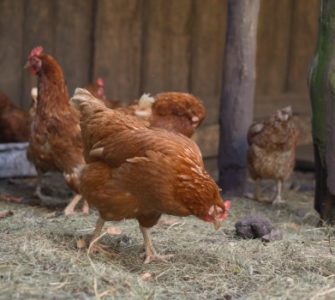Monitoring hen movement in cage-free aviaries provides valuable feedback
Nearly 35% of laying hens in the US are now raised in cage-free environments, according to Prafulla Regmi, PhD, assistant professor of poultry science at the University of Georgia.
That’s good news for meeting rising retail demand for cage-free eggs, but this type of production is not without production challenges. For example: Feather-pecking, cannibalism, smothering and keel fractures tend to be greater than when birds are housed in conventional cages.
Mislaid eggs and nutritional challenges also exist, Regmi added. By monitoring hen movement, growers are better able to identify ways to alleviate potential welfare problems. Factors that influence space utilization include housing design, bird genetics, rearing environment, time of day and health status.
While cage-free environments offer more space and bigger colonies, the systems are more complex.
“Instead of the farmer managing the birds, the birds tend to manage the farmer in cage-free systems,” Regmi said during a presentation at the Midwest Poultry Conference. “The dynamics of bird behavior and physiology could provide clues to effectively monitor the welfare of individual animals.”
Tracking hen activity
Regmi referred to a study that used a “machine vision-based” method for monitoring broiler chicken floor distribution.1 The machine vision-based method utilizes artificial intelligence approaches to analyze video recording and images captured from a camera. Wearable technologies like accelerometers and radio-frequency identification (RFID) systems have also been tried to monitor activity in cage-free pens. Regmi and a team of researchers used the RFID method in a study with laying hens, as it allowed tracking of vertical space utilization within the multi-tier aviary system.
Investigators used a commercial brown-egg strain for the experiment. Birds in the pullet phase were reared in a litter-and-platform facility, Regmi explained.
Multi-tiered aviary rooms were used in the hen phase. Four rooms with four sections per room provided 144 birds per section (at 1 square foot of space per bird). Investigators then randomly selected 40 birds from one section per room. A passive RFID tag with a unique identifier was embedded into the birds’ metal leg bands before deployment. Traveling-wave antennas were installed at the entry point of the bottom, middle and top tiers of the aviary systems. Investigators collected data from 29 weeks to 41 weeks of bird age.
“The recorded location of the hen from the RFID reader was validated by location observation on the video, and the correct location was identified with 87.25% accuracy,” Regmi said.
Classification
Birds were classified into three categories based on the number of daily transitions between tiers throughout the experiment, Regmi explained:
- Low activity: Less than 4 daily transitions between tiers
- Medium activity: Between four and 12 daily transitions between tiers
- High activity: More than 12 daily transitions between tiers
As one might expect, keel fractures and deviations were higher in the birds classified as high activity (100%) compared to the low-activity birds (55.56%).
“There was significant individual variation in space and resource utilization within a flock,” Regmi said. As an explanation for the bone data, Regmi said the low-activity birds likely had lower productivity, which could be due to the social structure within large groups.
“Other studies have also reported that birds with keel fractures mostly tend to use top-tier perches probably because of the pain from the fractures and to avoid other birds in the group,” Regmi added.
He concluded by noting more research is needed — not only to learn more about how birds behave in cage-free environments, but also to identify ways to minimize the associated challenges.
Editor’s note: Funding support for Regmi’s study was provided by a US Poultry and Egg Association grant.
1 Guo, Y.; Chai, L.; Aggrey, S.E.; Oladeinde, A.; Johnson, J.; Zock, G. A Machine Vision-Based Method for Monitoring Broiler Chicken Floor Distribution. Sensors 2020, 20, 3179. https://doi.org/10.3390/s20113179
Posted on September 6, 2022

















